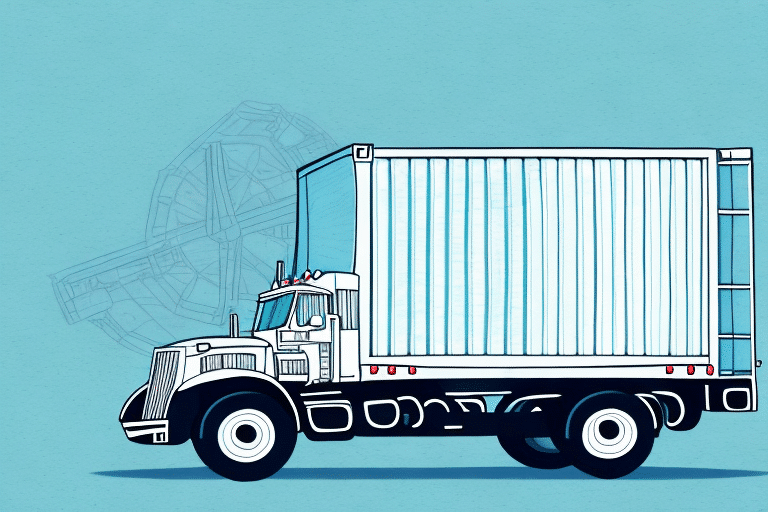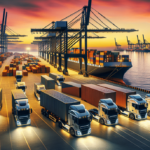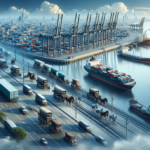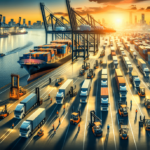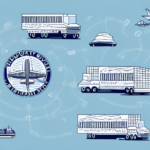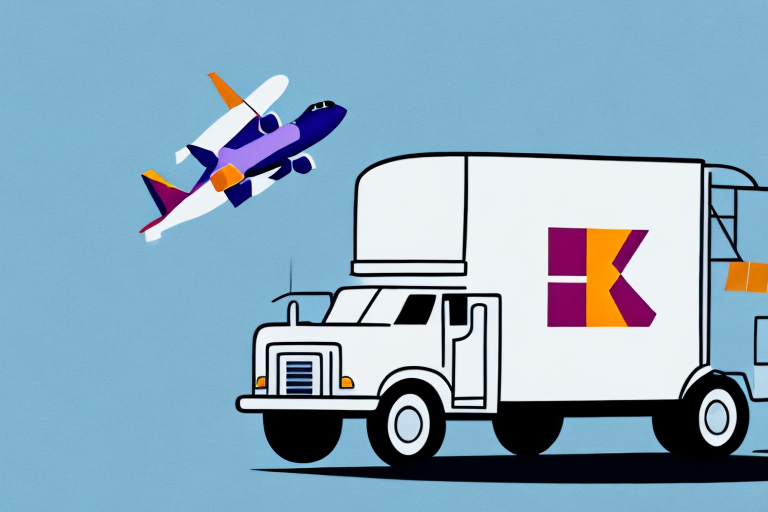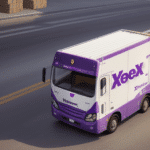What Is Drayage and How Does It Work?
Drayage is a critical component of the transportation industry, involving the movement of goods over short distances. Commonly, it transports containers from ports or rail yards to warehouses or distribution centers. Although drayage might appear straightforward, it encompasses a complex logistics network that demands meticulous planning and execution.
The Origins and Significance of Drayage in Modern Transportation
The term "drayage" dates back to the horse-drawn carriage era, where small carts, known as drays, transported goods from ships to warehouses. Today, drayage has evolved to utilize trucks, trains, and other transportation modes.
Drayage is indispensable in the transportation industry, facilitating the seamless movement of goods between various transport modes such as ships, trains, and trucks. Without effective drayage, efficient and timely transportation of goods across different platforms would be unattainable.
Moreover, drayage significantly impacts environmental sustainability. With the transportation sector's growth, there's an increasing emphasis on eco-friendly drayage practices. Companies are investing in electric and hybrid trucks, optimizing routes, and reducing empty container movements to minimize emissions and the overall environmental footprint of transportation.
Understanding the Drayage Process: From Pick-Up to Delivery
Initial Container Handling
The drayage process begins when a container arrives at a port or rail yard. A drayage truck then loads the container, ensuring it is securely fastened for transportation.
Transportation to Destination
The truck transports the container to its final destination, such as a warehouse or distribution center. During transit, drivers utilize real-time tracking systems to monitor shipment progress and address any potential delays caused by traffic, weather, or road closures.
Final Delivery and Return
Upon delivery, necessary paperwork is completed, and the container is unloaded. Drayage companies may then return the empty container to the port or rail yard for future shipments.
Additional Services
Many drayage providers offer supplementary services like warehousing, cross-docking, and transloading. For instance, cross-docking involves transferring goods directly from one truck to another, reducing storage time and transportation costs.
The Role of Drayage in Intermodal Shipping
Drayage is pivotal in intermodal shipping, which integrates multiple transportation modes to move goods efficiently. By handling the transfer between ships, trains, and trucks, drayage ensures a smooth and coordinated supply chain.
Intermodal shipping offers several advantages, including reduced transportation costs, faster delivery times, and lower environmental impact. Drayage companies enhance these benefits by providing specialized equipment and expertise to manage the unique challenges of intermodal transfers.
Furthermore, drayage is essential for last-mile delivery, ensuring that goods reach their final destination, such as retail stores or distribution centers, promptly and securely.
Drayage vs. Long Haul Trucking: Key Differences
Distance and Scope
The primary distinction between drayage and long haul trucking lies in the transportation distance. Drayage focuses on short-distance movements, typically within a metropolitan area, while long haul trucking covers extensive routes across regions or countries.
Equipment and Maneuverability
Drayage trucks are generally smaller and more maneuverable, enabling them to navigate congested urban areas and tight spaces effectively. In contrast, long haul trucks are larger, designed for extended highway travel and carrying heavier loads.
Specialized Handling
Drayage often involves transporting specialized goods, such as hazardous materials or oversized cargo, requiring specific handling and equipment. Long haul trucking deals with a broader range of goods, from perishable items to heavy machinery.
Factors Influencing Drayage Costs
Distance and Weight
Drayage costs are primarily influenced by the transportation distance and the weight of the goods. Longer distances and heavier loads typically increase the overall cost.
Container Type
The type of container used also affects drayage expenses. Specialized containers for hazardous or oversized materials may incur higher costs due to the additional handling required.
Operational Expenses
Fuel prices, labor costs, and necessary permits or licenses contribute significantly to drayage costs. Fluctuations in these factors can impact the overall expense of drayage services.
Seasonal Variations
During peak shipping seasons, such as holidays, drayage costs may rise due to increased demand. Adverse weather conditions can also lead to higher costs by causing delays or necessitating additional resources.
Efficiency and Route Optimization
Optimizing transport routes and minimizing empty trips can help reduce drayage costs. Companies can achieve this by leveraging technology and strategic planning to enhance operational efficiency.
The Impact of Technology on the Drayage Industry
Advanced Tracking Systems
Technologies like GPS tracking enable drayage companies to monitor shipments in real-time, enhancing transparency and allowing for timely adjustments to address any disruptions.
Automated Documentation
Electronic paperwork systems streamline the administrative aspects of drayage, reducing the time and resources required for documentation and improving overall efficiency.
Innovations in Equipment
Automated container handling equipment and autonomous vehicles are revolutionizing the drayage process, promising increased efficiency and cost savings in the near future.
Enhancing Safety
Sensors and cameras are being utilized to monitor container conditions, detect potential issues, and prevent accidents, thereby improving the safety and reliability of drayage operations.
Choosing the Right Drayage Provider for Your Business
Assessing Experience and Reputation
Selecting a drayage provider with a proven track record and strong reputation is crucial for ensuring reliable and efficient service.
Evaluating Pricing and Services
Comparing pricing structures and the range of services offered can help businesses find a provider that meets their specific needs and budget.
Considering Equipment and Facilities
Providers with modern, well-maintained equipment and facilities are better equipped to handle diverse and specialized shipping requirements.
Prioritizing Sustainability
Choosing a drayage provider committed to environmental sustainability—through the use of alternative fuels, energy-efficient equipment, and waste reduction initiatives—aligns with broader sustainability goals and can reduce the environmental impact of your supply chain.
Overcoming Common Drayage Challenges
Capacity Constraints and Labor Shortages
Addressing capacity limitations and labor shortages involves investing in workforce development, adopting automation technologies, and optimizing existing resources to enhance operational capacity.
Environmental Concerns
Implementing eco-friendly practices, such as using alternative fuels and optimizing routes, can mitigate the environmental impact of drayage operations.
Lack of Standardization
Standardizing drayage processes and adopting industry best practices can reduce confusion and improve efficiency across the supply chain.
Meeting Delivery Expectations
Leveraging advanced technologies like autonomous vehicles and drones, along with improved logistics planning, can help drayage companies meet the increasing demand for faster and more reliable deliveries.
The Future of Drayage: Emerging Trends and Innovations
The drayage industry is poised for significant transformation driven by technological advancements and evolving market demands. Key trends to watch include:
- Autonomous Vehicles: Self-driving trucks are expected to enhance efficiency and reduce labor costs in drayage operations.
- Drone Delivery: Drones could revolutionize last-mile delivery, offering faster and more flexible delivery options.
- Intermodal Integration: Enhanced collaboration across different transportation modes will streamline the supply chain and improve overall efficiency.
- Alternative Fuels: The adoption of electric and hydrogen-powered vehicles will contribute to more sustainable drayage practices.
- Data Analytics: Utilizing big data and analytics will enable drayage companies to optimize routes, predict demand, and improve service quality.
Staying abreast of these trends and embracing innovative solutions will be essential for drayage companies to remain competitive and meet the evolving needs of the transportation industry.
Conclusion
Drayage is an essential facet of the transportation and logistics industry, ensuring the efficient movement of goods across various transportation modes. By understanding the drayage process, recognizing its impact on intermodal shipping, and leveraging technological advancements, businesses can optimize their supply chains, reduce costs, and enhance sustainability. Selecting the right drayage provider and addressing industry challenges proactively will pave the way for a more efficient and resilient transportation network.
For more insights on transportation logistics, visit reputable sources such as the Bureau of Transportation Statistics and U.S. Department of Transportation.















